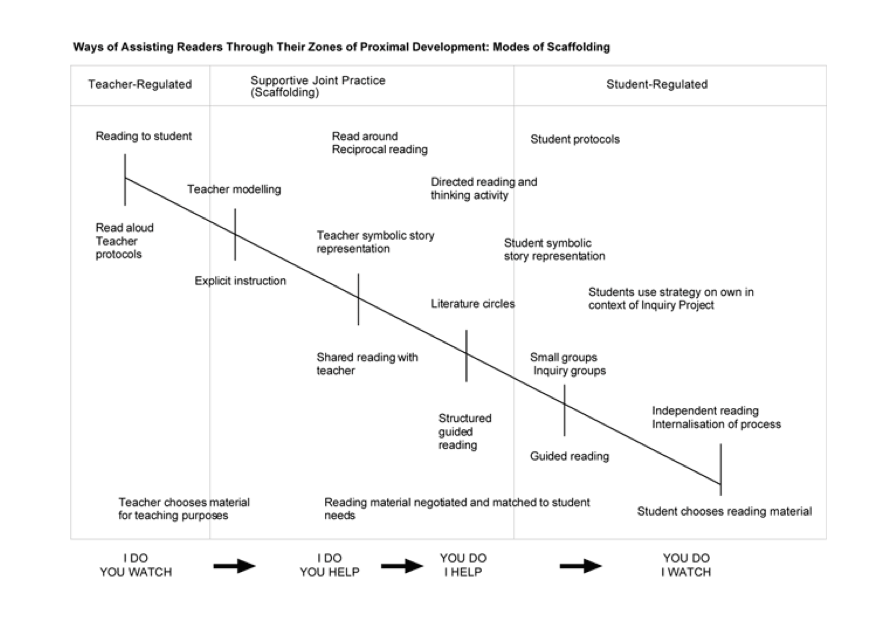Vygotsky and The Zone of Proximal Development
 Marguerite has noticed that her students are able to be more successfully when they work in small groups. What Marguerite may not know, is that this strategy makes use of Vygotsky’s Zone of Proximal Development. This theory emphasizes the effectiveness of working in small groups when there is at least one student who is more capable in communicating in the language. Knowing about this theory and what it proposes might encourage Marguerite to use specially structured small groups more often to support the growth and learning of all of her students. Marguerite has noticed that her students are able to be more successfully when they work in small groups. What Marguerite may not know, is that this strategy makes use of Vygotsky’s Zone of Proximal Development. This theory emphasizes the effectiveness of working in small groups when there is at least one student who is more capable in communicating in the language. Knowing about this theory and what it proposes might encourage Marguerite to use specially structured small groups more often to support the growth and learning of all of her students. |
back to case study |
What is the Zone of Proximal Development?
Vygotsky describes the Zone of Proximal Development as “the distance between the actual development level as determined by independent problem solving and the level of potential development as determined through problem solving under adult guidance with peer collaboration with more capable peers” (Vygotsky, 1978). In other words, a student is able to perform certain tasks better under adult guidance or with peer collaboration than what could be achieved alone. The Zone of Proximal Development bridges the gap between what is known (Zone of Current Development) and what can be known. Vygotsky claimed that learning occurred in the zone of what can be known.
How does the Zone of Proximal Development apply to SL/FL teaching?
The second language classroom is an excellent environment in which to apply the Zone of Proximal Development theory. While having a student work with a more capable peer is an essential part of the process, it is only the initial step in Vygotsky's theory.
Vygotsky (1978) believed that “what the child [or learner] is able to do in collaboration today, he will be able to do independently tomorrow.” Tharpe & Gallimore (1988) describe the ZPD as a four-stage process:
Stage 1: Assistance provided by More Knowledgeable Others (MKO’s) or capable peers
Stage 2: Assistance provided by self
Stage 3 Automatization through practice
Stage 4: De-automatization; recursiveness through the previous three stages
The successful application of Vygotsky’s theories requires a learning environment dedicated to these principles. Students acting as MKO’s or capable peers must be highly involved, must work in collaboration with other students to facilitate learning, and must be familiar with the ZPD’s of other students. That is, students need to use metacgnition to discover where they are as learners and where they are going. This is in contrast to some traditional teaching methods which require that students simply regurgitate recited material.
Source: http://coe.sdsu.edu/eet/articles/vygotsky_zpd/index.htm
How does the ZPD relate to scaffolding?
Here is an example of how the ZPD might relate to the development of reading.


“Understanding Cooperative Learning through Vygotsky’s Zone of Proximal Development” http://www.eric.ed.gov/ERICDocs/data/ericdocs2sql/content_storage_01/0000019b/80/14/0e/f4.pdf “Dynamic assessment in the language classroom" |










